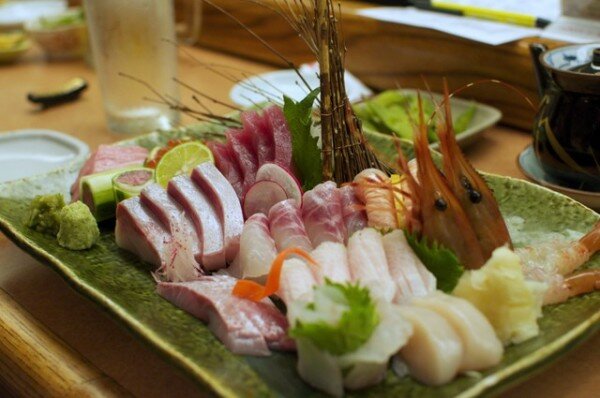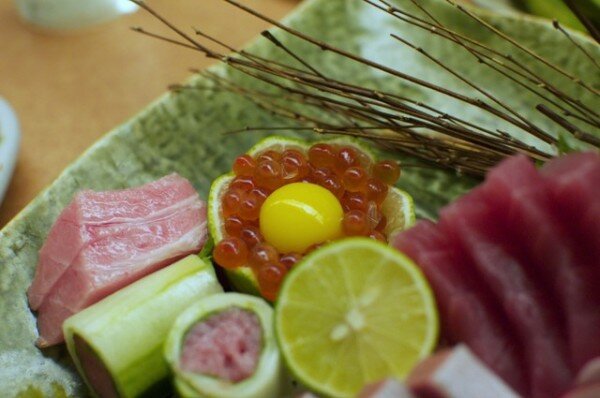
The most expensive tuna ever was sold last week in Japan, at the famous Tsukiji market in Tokyo. Tsukiji is not only the largest supplier of fish in the world, but like the options for goods traded on the floor of the Merc in Chicago, the auctions at Tsukiji have a global impact on the price of fish around the world.
A blog called Sushi Otaku points out that the fish, which was purchased for $736,000, or $1238 per pound, is going to be sold at a loss to consumers. The WSJ estimates that each sliver of tuna will be sold to consumers for $1.75 to $5.45. Resources I’ve found online estimate there are 15-25 pieces of nigiri per pound of fish. Depending on the thickness of cut, a sushi chef would have to charge between $50-100 per piece just to cover costs.
Sushi Otaku points out, part of the reason for the exorbitant cost is the celebration of the new year at the market, where the record setting auction is symbolic for prosperity, buoyed further by the public desire to support an industry which has been greatly hurt by last year’s disasters.
But this got me thinking about high quality tuna (such as the otoro pictured below-left from Sushi Huku), the best of which is quickly disappearing from our menus, and not just because of overfishing. Many chefs simply cannot afford to put it on their menu anymore. At a meal at MF Buckhead last year, Chef Kinjo told me the bluefin otoro he was serving us cost about $400 for a 1.5lb piece, which means he would have to charge $20-30 per piece of nigiri to even make it worth their while. Many wouldn’t even bother putting it on the menu at this price, so the loss is subsidized by the profit on other items (as is the case on this sashimi platter below), the tuna seemingly used as a reward for excellent customers.
I recall an online review of Soto (in NYC, formerly Atlanta) where a customer was complaining that he ordered fatty tuna, having seen another customer order some, but Soto told him no, he didn’t deserve it. The customer was pissed. I think this shows respect for the fish on the part of Soto-San. But it’s also a financial decision. If Soto is rewarding a regular customer who drops thousands on fish a year, the tuna is a very valuable tool to him.
Of course this argument/discussion of price is moot if restaurants cannot find good tuna anymore. I’ve seen Taka lament on his blog that he may have to learn how to operate without tuna.
Tuna ? There is no hope this year. This is the true story. Let’s say they had 100 of big eye tuna before. 40 went to NY, 20 went to and there 5 came to Atlanta. But the total amount of tuna is not much now. Let’s say they have 30 of big eye tuna. 20 go to NY, 5 go to LA and we can get less than 1. And the price is high and restaurants owners don’t want to buy. We do not want blue fin tuna because of high price. But we can buy big eye tuna.
Which restaurant can buy these kind of good tuna? Taka, Tomo, MF and maybe Nakato. only 4 restaurants can buy. And if they get a large size tuna, they cannot sell all of them. And they do not want to take a risk.
I buy O2 tuna from Philippine and buy farm raised and frozen blue fin oh toro from Australia. This buying will continue for a while.
Some may object to eating bluefin tuna due to scarcity and overfishing, but I think the chances of convincing Japan (which consumes 80% of the world’s bluefin tuna) to stop eating it is somewhere between slim and asking Tebow to renounce Christ. I personally don’t crave fatty tuna much, but I appreciate the gesture and am certainly not going to turn it down when it’s offered my way. It would be downright disrespectful.

Both photos in this post by .
Check out this good tuna breakdown video from Eater.